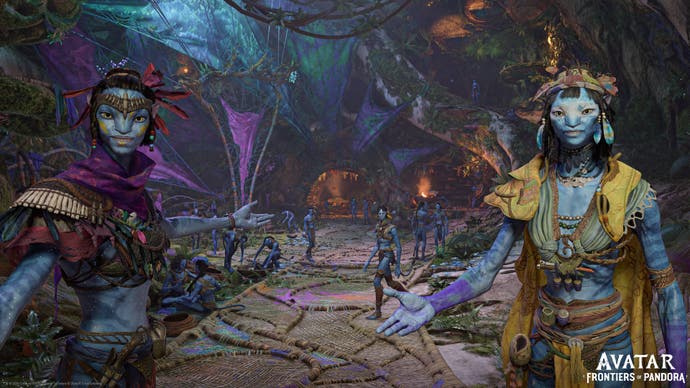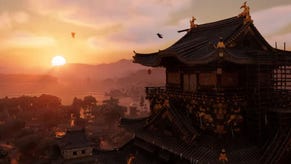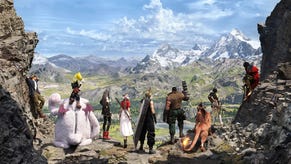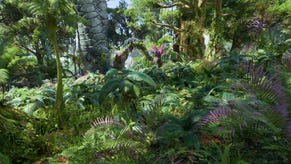Avatar: Frontiers of Pandora aims to mix Ubisoft's open worlds with James Cameron's "sustainability"
Creative director Magnus Jans¨¦n explains an oddly perfect match.
Avatar: Frontiers of Pandora has finally appeared in the wild, and much the same as with Star Wars: Outlaws, Ubisoft's other big new open world game based on a big fantasy movie licence, we saw it in a bit more detail behind closed doors over in Los Angeles - and spoke with the game's creative director, Magnus Jansén.
At first glance, much of this gameplay reveal is what you'd expect from a Ubisoft Massive (and co.) take on an action movie licence: it's open world, it's action-adventure, it's got bows and arrows and assault rifles, outposts, wildlife, resource collecting, crafting and customisation. It's in a nice sunny, broadly exotic jungle. It's Far Cry, in a lot of ways - but there is one twist.
Frontiers of Pandora is trying to make its design feel a bit more "sustainable", as Jansén put it to us. Typically, games like Far Cry and its design cousins tend to feel, for lack of a better word, a little colonial: you turn up in a new place, and you go around harvesting as much as you can from that place - animal hides, plants, natural resources - until you've built up enough brute strength. It's a gameplay loop that sits in direct opposition to the ideals of James Cameron and his Avatar franchise - with its ultra-militarised humans rocking up on idyllic Pandora and burning it to the ground in search of Unobtainium and magic space ambergris. Environmentalism, naturalism, and generally not just rocking up somewhere to harvest as much of its naturally occurring stuff as you can for your own benefit is kind of the central message.
So how does Avatar: Frontiers of Pandora mix that with the whole power fantasy, loot-and-craft loop of past Ubisoft open worlds? For one, it tries to shift the emphasis from "quantity to quality".
"The ethos of Avatar of there being a sustainable angle to it really made its way into a couple of game loops," Jansén told us. In the game, he explained, you might both "harvest plants and hunt animals for food, for sustenance, to regenerate your health," but better-quality ingredients will give you certain buffs, while the better you are at finding the higher-quality items, the more "in tune" you are with Pandora, the better quality your crafted items might be.


"As in real life, some things grow better somewhere. Some fruits are sweeter depending on where you pick them, or the conditions in which they grow," Jansén explained. You don't have to focus on this in-game, but it'll make a difference if you do, and achieving that will mean understanding the planet, talking to NPCs or reading up on where the best things grow.
That then feeds back into the other major loop we saw in the trailer, which is your battle against the human antagonists of the RDA. They've filled the world with heavily polluting outposts and factories that you must clear out and, in the process, allow the planet to heal. After they're cleared - Jansén told us this is immediate, but explained in-game with proper context - better quality resources will return to that area. He gave the example of you discovering that a certain ingredient is in a certain RDA-controlled area, prompting you to go clear them out of that specific spot in order to find it.
The conditions themselves can be quite varied - "is it at night or at dawn or just after rain?" Jansén suggested - although you won't need to fully track the passage of time. He also tempered expectations of just how central this will be. It's more of a "high end" mechanic for people who really want to excel, he said, and an added bonus to taking out your opponents. As Jansén put it, you might say to yourself of the RDA, "I want to shoot them in the face and destroy them for story reasons - yes, but there is a small little gameplay effect there that we really like as well, on what you rely on to get by."

Cameron's other famous obsession, of course, is technology, and there's some talk of Frontiers of Pandora's PC version being particularly nice to look at. Jansén confirmed it'll have features like ray-traced audio and lighting, after "a lot of" technical development on The Division's Snowdrop engine, which Frontiers of Pandora uses. But the big emphasis for Ubisoft Massive, in working with Cameron's Lightstorm technical team, was on making the first-person perspective work, which went right back to their early conversations before it was announced in 2017.
"Personally I'm a first-person fan, I have been since I started playing them in the early 90s, I just love the immersion and the escapism vehicle that they are. So I'm super happy that when we started talking with Lightstorm all those years ago, it was clear that they were on board with that... So technology is key. The Snowdrop engine, it being new-gen only, all of that is part of how it all plays together to create the ultimate escapism vehicle."
Much of Avatar: Frontiers of Pandora remains mysterious, but there's plenty to dig into here. It's out on 7th December this year, you can play it in two-player co-op online - "we don't support split screen", Jansén confirmed - and it might make for a curiously perfect fit between Ubisoft's traditionally escapist, thrill-and-conquest fantasy, and James Cameron's quite explicit emphasis on thinking about its consequences.






